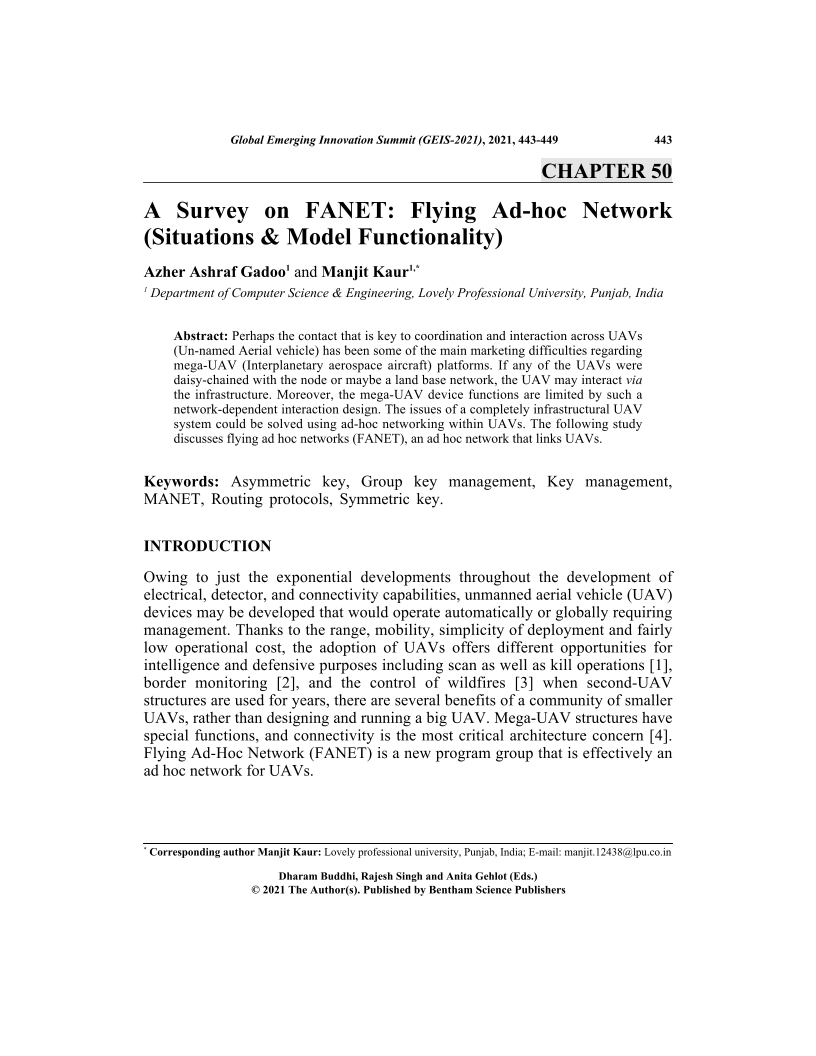oa A Survey on FANET: Flying Ad-hoc Network (Situations & Model Functionality)

Access full text
Chapter
- Authors: Azher Ashraf Gadoo1, Manjit Kaur2
-
View Affiliations Hide Affiliations1 Department of Computer Science & Engineering, Lovely Professional University, Punjab, India 2 Department of Computer Science & Engineering, Lovely Professional University, Punjab, India
- Source: Global Emerging Innovation Summit (GEIS-2021) , pp 443-449
- Publication Date: November 2021
- Language: English
Preview this chapter:



A Survey on FANET: Flying Ad-hoc Network (Situations & Model Functionality), Page 1 of 1
< Previous page | Next page > /docserver/preview/fulltext/9781681089010/chapter-50-1.gif
Perhaps the contact that is key to coordination and interaction across UAVs (Un-named Aerial vehicle) has been some of the main marketing difficulties regarding mega-UAV (Interplanetary aerospace aircraft) platforms. If any of the UAVs were daisy-chained with the node or maybe a land base network, the UAV may interact via the infrastructure. Moreover, the mega-UAV device functions are limited by such a network-dependent interaction design. The issues of a completely infrastructural UAV system could be solved using ad-hoc networking within UAVs. The following study discusses flying ad hoc networks (FANET), an ad hoc network that links UAVs.
Hardbound ISBN:
9781681089027
Ebook ISBN:
9781681089010
-
From This Site
/content/books/9781681089010.chapter-50dcterms_subject,pub_keyword-contentType:Journal -contentType:Figure -contentType:Table -contentType:SupplementaryData105
/content/books/9781681089010.chapter-50
dcterms_subject,pub_keyword
-contentType:Journal -contentType:Figure -contentType:Table -contentType:SupplementaryData
10
5
Chapter
content/books/9781681089010
Book
false
en

